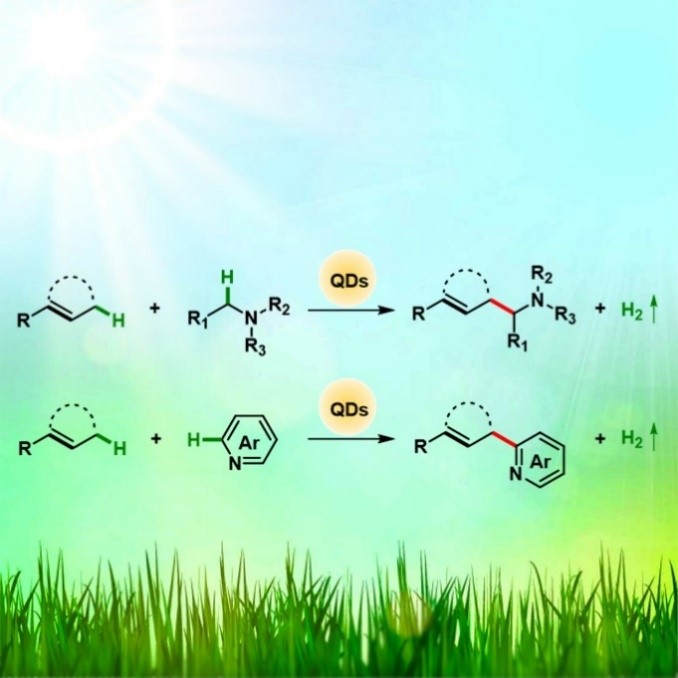Allylation reaction is highly important for the construction of carbon-carbon and carbon-heteroatom bonds. It shows wide application in the synthesis of biologically relevant molecules, modern synthetic materials and commodity chemicals.
Traditionally, allylic substitution reaction (Tsuji-Trost reaction) has been well established as a powerful strategy to achieve such transformation. But this transformation is weak in atom economy and step economy.
Direct functionalization of allylic C(sp3)–H bonds presents a concise and efficient approach for allylic C–H activation. However, the previous approaches generally require transition metal catalysts and stoichiometric oxidant, which lead to tedious post-processing of the reaction, low reaction efficiency and environmental pollution.
Recently, a research team led by Prof. WU Lizhu from Technical Institute of Physics and Chemistry of the Chinese Academy of Sciences, for the first time, reported allylic C(sp3)–H activation via cross-coupling hydrogen evolution. The results were published in Chem.
Scientists discovered that visible-light irradiation of semiconductor quantum dots (QDs) led to a direct cross-coupling of allylic C(sp3)–H bond with C–H bonds of the other partners and produced hydrogen (H2) as the byproduct. The availability of multiple binding sites of QDs allows the hole and electron acceptors to associate with the QD simultaneously so that excess charge does not accumulate on the photocatalyst. The synergetic feature provides a convenient synthetic approach to allylic C-C bond formation.
In the research, the protocol does not require metal catalyst and stoichiometric oxidant, and shows good functional group tolerance as well as broad substrate scope. Such a transformation can be exploited into late-stage modification of complex natural products and pharmaceutical molecules even under direct irradiation by solar light.
The high efficiency and selectivity presented by the direct alkylation and arylation of allylic C(sp3)–H bonds with hydrogen evolution is promising in both academic and industrial manufacturing.
This work was supported by the National Natural Science Foundation of China, Ministry of Science and Technology of China, Chinese Academy of Science and K. C. Wong Education Foundation.

Figure1. Allylic C(sp3)–H Activation via Cross-Coupling Hydrogen Evolution (Image by WU et al.)
NEWS